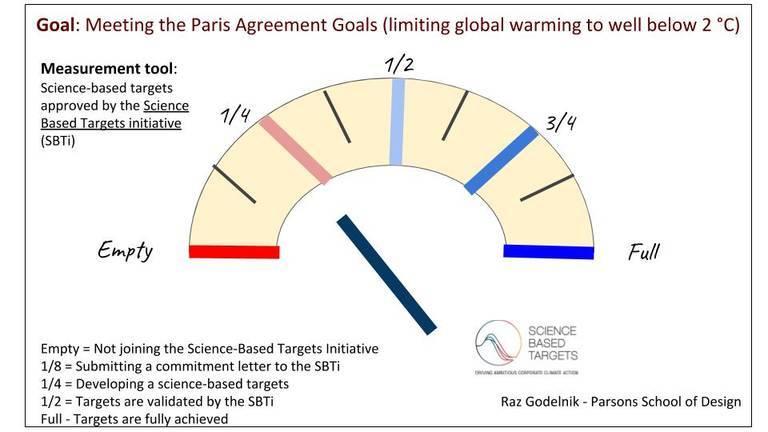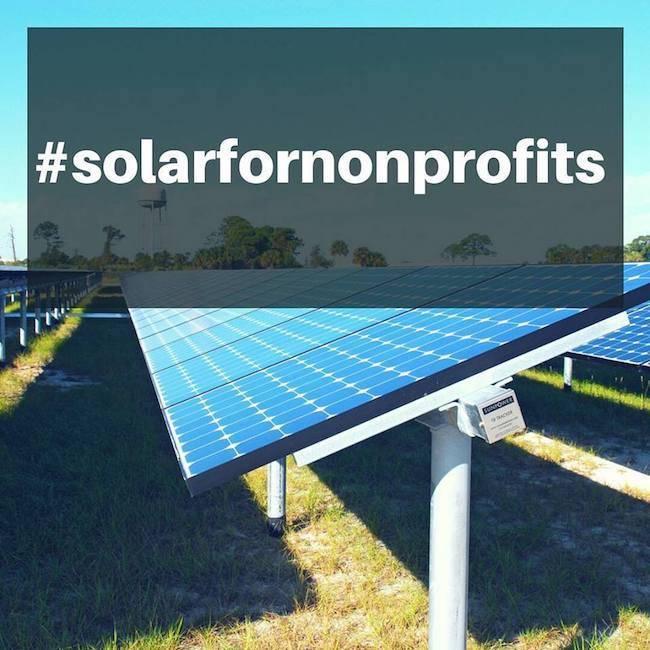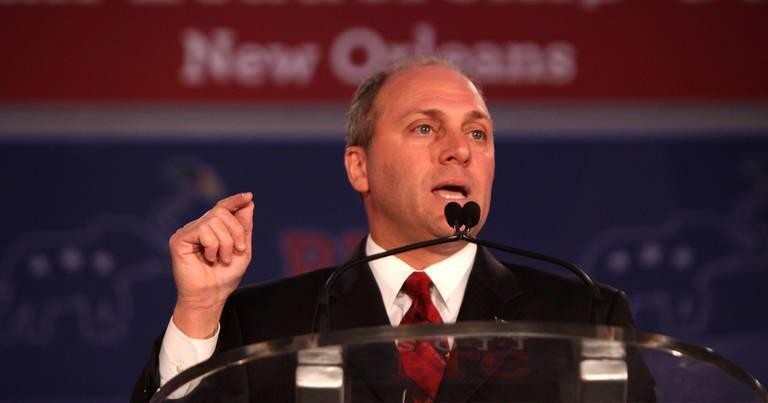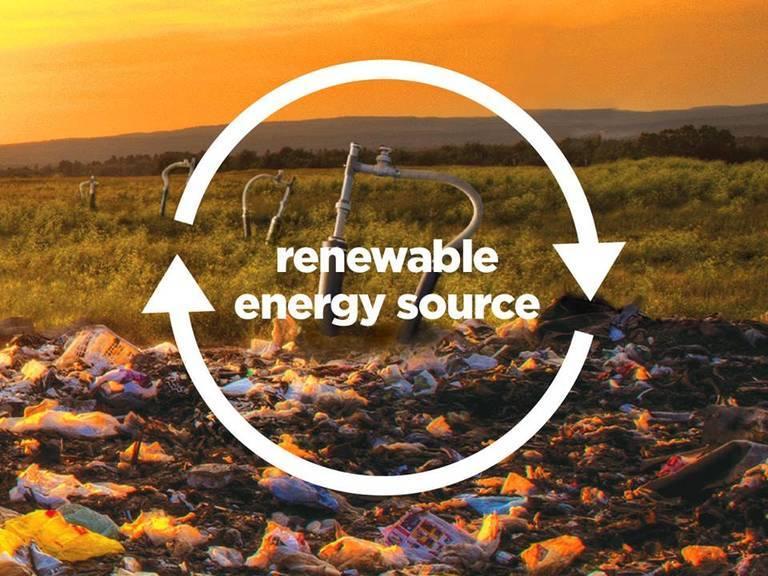How Machines are Learning for Modern Agriculture


By Modern Agriculture
Arthur Samuel, an eccentric computer engineer at Stanford University, took part in what could be considered the most important game of checkers ever played. Arthur challenged the then reigning Connecticut state champion to match wits with a computer he programmed to play checkers.a
The machine emerged victorious.
Surprisingly enough, this event is not an artifact of recent history; the fateful game took place in 1961. Decades prior to the personal computer revolution, Professor Samuel built a working prototype capable of what we now call, “machine learning.” Rather than programming the 500 quintillion b potential scenarios on a checkerboard, Arthur instructed the computer to react based on games it had played in the past. After playing game after game, over time, the computer “learned” to master checkers.
Computers can develop skills without being explicitly programmed to do so.
Checkers is a game of weighing dozens of factors, calculating risk, and planning the next, most efficient move. The same principles Arthur Samuel applied to his early machine learning experiments are used today—especially in modern agriculture. One of the fastest growing areas under the discipline of “artificial intelligence” is machine learning. And this technology is being deployed across modern agriculture to create solutions with greater accuracy and at unprecedented scale.
Machine learning uses algorithms to parse data, learn from it, and make determinations without human intervention.
Millions of Choices
Plant breeders are constantly searching for a specific trait. They look for qualities to help a crop more efficiently use water, nutrients, adapt to climate change, or resist disease. For a plant to inherit a beneficial trait, researchers must find the right sequence of genes. But exactly which sequence is the right one, is a mystery in the beginning.
Plant breeders face literally millions of choices when producing a new variety.
Deep learning algorithms can take a decade of field data—insights about how crops have performed in various climates and inherited certain characteristics—and use this data to develop a probability model. With all this information, far more than any single human can grasp, machine learning can predict which genes will most likely contribute a beneficial trait to a plant. Of the millions of combinations, advanced software greatly narrows the search.
Deep learning is a subset of machine learning that can draw conclusions from various sets of raw data.
More Rigorous Testing
With the aid of machine learning, plant breeding is becoming more accurate, efficient, and capable of evaluating a much wider set of variables. Scientists can use computer simulations to conduct early tests to evaluate how a variety may perform when faced with different sub climates, soil types, weather patterns, and other factors. This digital testing does not replace physical field trials, but allows plant breeders to more accurately predict the performance of crops. By the time a new variety reaches the soil, machine learning has helped breeders create a more thoroughly vetted product than ever before.
Early Identification
When tracking any disease, early and accurate identification is essential. The traditional method of identifying plant disease is done by visual examination. This process is plagued with inefficiencies and prone to human error. For a trained computer, diagnosing plant disease is essentially pattern recognition. After sorting through hundreds of thousands of photos of diseased plants, a machine learning algorithm can spot disease type, severity, and in the future, may even recommend management practices to limit loss from a disease.
Machine learning in agriculture allows for more accurate disease diagnosis—all the while, helping eliminate wasted energy and resources from misdiagnoses. Farmers can upload field images taken by satellites, UAVs, land based rovers, pictures from smartphones, and use this software to diagnose and develop a management plan.
Machine learning in agriculture allows for more accurate disease diagnosis—all the while, helping eliminate wasted energy and resources from misdiagnoses. Farmers can upload, UAVs, land based rovers, pictures from smartphones, and use this software to diagnose and develop a management plan.
Adapting with Algorithms
Crop disease is a major cause of famine and food insecurity around the world.c A core objective of modern agriculture is to create seeds and crop protection products that provide relief to these global challenges. One of the many benefits of machine learning, is how this technology can make more accurate and precise improvements to a process. In plant breeding, machine learning is helping create more efficient seeds. Such advancements offer the potential to create even more adaptable, and productive seeds to better utilize our precious natural resources.
With memorable names like BOLT-LMM, FaST, and MAGIC,d these machine learning algorithms evoke a sense of wonder and awe.
The Accessibility of Machine Learning
What used to be reserved for major institutions is now within reach for surprisingly small, but capable teams. Similar to changes brought by access to less expensive servers and microprocessors, small startups using machine learning are beginning to reshape the industry of modern agriculture. A $5,000 supercomputer and a few ambitious computer engineers could theoretically create a huge breakthrough in plant breeding. Just a decade ago, this notion was fantasy.
The Promise of Machine Learning
Much like software, improvements in machine learning have seemingly endless possibilities. Researchers in modern agriculture are testing their theories at greater scale and helping make more accurate, real-time predictions. Modern agriculture has the potential to discover even more ways to conserve water, use nutrients and energy more efficiently, and adapt to climate change. Who knew Arthur Samuel’s quiet game of checkers would pave the way for so many advancements in modern agriculture?
Sources
aStanford University bWired Magazine cJihen Amara, Bassem Bouaziz, and Alsayed Algergawy dThe Black Boxes of Plant Breeding
Originally published on Modern Agriculture and distributed by 3BL Media.
Photo: Modern Agriculture
Why a Dashboard With Two Gauges Should Replace 80-Page CSR Reports


Going through the 84 pages of “Future at Heart”, Target’s 2018 corporate responsibility report (CSR), I had hard time understanding if Target is doing a good job addressing its environmental and social impacts. It’s clear that the company is making progress, but is it good enough? After giving it some more thought, I realized that I need to frame my question differently:
How might sustainability reports provide clarity on how companies address their social and environmental impacts, and at the same time can be read in 30 seconds and understood by 5-year-olds?
Let me explain.
Sustainability reporting (aka corporate responsibility or CSR reporting) represents (almost) everything that is wrong with sustainability-as-usual – these long and complex reports celebrate all sorts of progress, without giving the reader any clear indication if the progress described in the report is good enough. This is partially because there is no clear benchmark for ‘good enough’, and partially because of an incrementalist mindset dominating the sustainability-as-usual sandbox. Add to it reporting formats that change from company to company and thus make it almost impossible to compare companies, even when they are grounded in the same reporting standards, and you end up with reports that very few read and even fewer can make sense of. The frustration around sustainability reporting is echoed in quotes provided on NBS’s Sustainability Reporting Research report, which was published last October:
“We publish a lot of environmental data in the annual report and something that came out of the [stakeholder] interviews was that that data don’t really mean anything to anyone. To some it was just a list of numbers, it doesn’t really tell a story.” – Sustainability Manager from an Air Transport Company
“If you want people engaged, if you want them motivated, if you want their buy-in, you need to show numbers but you also need to be able to tell the story in a very sophisticated but also a very brief way. People don’t have time to read now.” – Industry Body Stakeholder from a Consumer Packaged Foods Company
So what do we do about it? As detailed in my last article I believe that we need to create a new sandbox, moving away from a sustainability-as-usual mindset. The new sandbox will look among other things to radically change how we think about sustainability reporting. There are of course already efforts to fix reporting, but they’re mostly taking place within the current sandbox (with the exception of the Reporting 3.0 initiative) and thus are limited by nature. The urgency that is at the heart of the new sandbox requires a different type of approach, one that creates more engagement and accountability and allows us to differentiate between ‘good’ and ‘bad’ companies. To do so we need to consider the following: What do we want from companies, what benchmarks they should use, and how their progress (or lack of it) should be communicated.
What do we want from companies?
I’ll go into the specifics of this question in more detail in another article, but for now let me put it this way – in the new sandbox we should expect every company to do the following:
1) Take climate change seriously and respond with urgency.
2) Treat stakeholders responsibly.
These two components represent a clear set of priorities, addressing “the single greatest crisis the planet has ever faced”, i.e. climate change, while paying close attention to companies’ relationships with their stakeholders at the same time. They are also grounded in the understanding that no trade-off is allowed – you can’t treat your employees poorly or ignore the needs of your community while fighting climate change.
The benchmarks
1) The benchmark for responding to climate change should be the Paris agreement goals (“Holding the increase in the global average temperature to well below 2 °C above pre-industrial levels and to pursue efforts to limit the temperature increase to 1.5 °C above pre-industrial levels”). Every company should adhere to it.
Measurement tool: In order to assess the implementation of the Paris Agreement I suggest to use the Science Based Targets initiative (SBTi), which is a collaboration of a number of respected environmental organizations, providing companies with “a credible pathway in line with the goals of the Paris Agreement.” SBTi offers a credible, science-based roadmap for companies interested in adopting the Paris Agreement goals, which includes three steps:
1) Signing a commitment letter indicating that the company will work to set a science-based emission reduction target.
2) Developing a target - once the company has signed the commitment letter it will have up to 24 months to develop a science-based target.
3) Submitting the company’s target for validation with the SBTi.
So far 440 companies have been working with the initiative, including 122 companies that their science-based targets were already been approved. It is also important to note that SBTi doesn’t offer a ‘one solution fits all’ approach – it’s rigorous, science-based process offers companies multiple approaches to target setting, assuming that “some methods will be more suitable for certain companies/sectors than others.”
2) Finding a clear benchmark for treating stakeholders responsibly is far more complex. There are different frameworks that can be considered, such as the UN Sustainable Development Goals (SDGs), which are valuable but are not necessarily the best fit for a simple and clear benchmarking.
I’m not sure I have the best answer (happy to receive your feedback!), but for now I believe the B Corp certification should be used at minimum as a benchmark, reflecting the notion that “B Corporations are businesses that meet the highest standards of verified social and environmental performance” as well as the fact that this has become a leading platform enabling companies to balance purpose and profit. I don’t suggest that every company will have to become a certified B Corp, (although that would be a plus!), but that every company should meet the minimum required of every company interested in the certification - a score of over 80 points on the B Impact Assessment.
Measurement tool: The B Impact Assessment (BIA) is “a free online platform to evaluate your company’s impact on your workers, community, environment, and customers.” It includes between 50-150 questions covering five areas: Workers (compensation, benefits, work environment, employee ownership, etc.), Community (suppliers, diversity, charity work, etc.), Customers (direct impact of products/services, targeting underserved communities, etc.), Environment (energy use, facilities, etc.), and Governance (transparency, ownership). “The Assessment is scored out of 200 possible points. The weightings of each question and section depend upon the specific “Assessment track” — determined by industry, size, and geography — of the business taking the Assessment,” the B Labs’ website explains.
While this may not be the perfect tool (for example, there’s still more work to be done on how multinationals and public companies can use it), it still has many advantages in providing a clear understanding of how responsibly company treats its stakeholders (including the environment). As you can read from the experience of companies such as Patagonia, Ben & Jerry’s and Danone North America, this tool helps companies to better understand where they stand in comparison to other companies and how effective are different strategies or programs they apply. Used already by more than 40,000 companies, this tool is as comprehensive as many other tools, but at the same time is able to generate an easy-to-understand bottom line, i.e. a score that can make sense of so much qualitative and quantitative data companies include in their reports.
How to communicate progress?
This is a critical component, reflecting the overall difficulty of sustainability reporting to communicate sustainability data in an engaging way. Assuming the current lengthy, complex reports don’t do such a great job as an effective communication tool, providing all stakeholders with clarity about the companies’ sustainability performance we should consider using a new approach.
This approach should be first and foremost user-friendly. I would like to make it as simple and easy as possible, something along the lines of what Robin Chase, cofounder of Zipcar, had in mind when she imagined the Zipcar experience – “Zipcar’s goal was to make renting a car as easy and convenient as getting cash from an ATM,” she writes in her book “Peers Inc”. Inspired also by Bill Burnett and Dave Evans’s “Designing Your Life” idea of using a Work/Play/Love/Health dashboard as a visual self-evaluation tool, I thought that the goal should be to make reading and understanding a sustainability report as simple as reading a fuel gauge.
My suggestion therefore is that companies will report on their progress using a dashboard with two gauges, one for their climate change response and the other for their stakeholder relationships. These gauges provide an intuitive sense of how well companies are doing with each goal. See below the proposed gauge for each goal.
While this is just a very preliminary proposal and the different levels on each gauge can be reconsidered, these gauges can provide us with clarity that is nowhere to be found in today’s reports. For example, On Target’s report you can find the following update: “While we are implementing projects in our owned brand manufacturing facilities that will result in the avoidance of Scope 3 emissions, within the year, we aim to develop an additional Scope 3 goal that, coupled with our Scope 1 and 2 goals, will fulfill our commitment to the Science-Based Targets initiative.” (p. 25). With a little bit of detective work on the SBTi website I understood that Target went through step #1 of the SBTi process last October, i.e. providing a commitment letter. As a result Target’s climate change gauge will show it is one-eighth full.
Using this dashboard also makes it easy to compare companies’ performance. Take for example, Yum! Brands’ new report (72 pages), in which the company, which operates brands such as KFC, Pizza Hut and Taco Bell, reveals that it will “reduce average restaurant energy and GHG emissions by an additional 10 percent by the end of 2025.” The company, however, does not take action with the SBTi, which means it does not work to meet the Paris Agreement goals. Therefore its climate change gauge will show empty. One may argue that it is not fair to say the company is not doing anything about climate change because it does something. However, I would argue that any response to climate change that does not adhere to the Paris Agreement Goals is just unacceptable in 2018, and is equivalent to doing nothing. The dashboard reflects it, showing that the company is not taking climate change threats as seriously as it should.
An important question is what should be the threshold for ‘good enough’ in these gauges? While this is open for debate, I would suggest that ‘half-full’ on the gauges, i.e. targets, are validated by the SBTi on the climate change gauge and achieving a score of at least 80 points on the B Impact assessment, should be the minimum for performance to be considered as ‘good enough’. In the case of Target and Yum Brands we can learn from their dashboards that both companies currently don’t do enough about climate change. We can also learn that while both companies are still far from the ‘good enough’ threshold Target is currently doing a better job than Yum.
I want to be clear that the lengthy, complex sustainability reports companies produce now may still have a role in the future, even with the suggested dashboard in place, perhaps similar to the annual Form 10-K required by the U.S. Securities and Exchange Commission (SEC). However, this can’t and shouldn’t be the main way companies report to their stakeholders on their efforts to address their social and environmental impacts.
"We shape our tools and afterwards our tools shape us" – this quote that is attributed to Marshall McLuhan can be easily applied to sustainability in business. The current sustainability reporting is one of the tools shaping the sustainability-as-usual sandbox. Moving out of this sandbox requires us to think of new reporting tools, such as the reporting dashboard that can shape a new sandbox, where urgency, engagement, accountability and responsibility are clear and don’t get lost in never-ending reports.
New Solar Financing Model for Nonprofits Blows a Hole in Tariff Barrier


When President* Trump first proposed new tariffs on imported solar panels, industry stakeholders predicted that solar installations in the U.S. would grind to a halt. The worst has yet to materialize. The rate of solar growth slowed last year but it is picking up again, and the U.S. solar industry could emerge stronger than ever.
In one sign of things to come, new financing instruments are beginning to crack open the market for solar installations at nonprofits and other tax exempt organizations.
A new rooftop solar discount for the tax-free
The untaxed sector has been relatively slow to adopt rooftop solar, partly because conventional tax benefits don't apply to organizations that don't pay taxes in the first place.
One new workaround is a commercial financing model for rooftop and ground mounted PV installations called Collective PACE™, launched this week by the green financing leader Greenworks Lending and nonprofit solar specialist Collective Sun.
The new model leverages two instruments that were once fairly exotic, but are now familiar fixtures in the energy efficiency and renewable energy fields.
One is C-PACE ( Commercial Property Assessed Clean Energy), which provides commercial property owners with access to low cost financing for energy related upgrades. The up-front costs are financed through a voluntary assessment on the property. If all goes according to plan, the assessment is offset by lower energy costs.
No money down is also the operating principle for PPAs (Power Purchase Agreements). With typical PPAs, property owners have rooftop solar installed by a third party that owns the equipment. The cost is paid off through the property owner's utility bill. Ideally, the property owner's bill goes down and the end result is a "free" rooftop solar installation.
Combine the two, and the result is a third-party lease agreement:
Collective PACE™ delivers a discount to nonprofits through the upfront monetization of tax incentives by the third party, while simultaneously allowing nonprofits to take advantage of the longer-term, lower-cost financing available through C-PACE.
Collective Sun and Greenworks also cite benefits over and above the direct advantages of rooftop solar:
...Charitable rating organizations such as GuideStar can look more favorably upon an organization's financials when less contributed revenue is allotted to operations vs. core services provided. Further, the burden on development departments and donors to fund new construction or other needed capital improvements is reduced when financing can cover 100 percent of a solar investment.
PACE and the race against coal
C-PACE financing is not available in every state. As with rooftop solar policies, the situation can vary considerably depending on state-level legislation.
That could change, because U.S. Department of Energy is very much in favor of C-PACE as a matter of national policy. That's interesting because the President has been vociferous in his support for coal-sourced electricity, while C-PACE aims in exactly the opposite direction.
Nevertheless, earlier this year the Energy Department issued a report optimistically titled, Lessons in Commercial Leadership: The Path from Legislation to Launch. The goal is clear:
Lessons in C-PACE Leadership aims to fast track the set-up of commercial property assessed clean energy (C-PACE) programs for state and local governments by capturing the lessons learned from leaders.
The Energy Department singles out Texas, Connecticut and California among the nation's C-PACE leaders.
The agency is also interested in promoting R-PACE for residential properties. The challenges for rooftop solar financing are different in the residential sector, but there is also a major new opportunity in R-PACE:
A PACE assessment is a debt of property, meaning the debt is tied to the property as opposed to the property owner(s)...This can address a key disincentive to investing in energy improvements because many property owners are hesitant to make property improvements if they think they may not stay in the property long enough for the resulting savings to cover the upfront costs.
Consider that the average U.S. resident moves more that ten times in their lifespan, and you can see where the limitations of PPAs come in. If the rooftop solar financing is attached to a person's utility bills, they would likely move before they realize any significant benefit. PACE closes that gap and incentivizes energy upgrades regardless of how long (or short) a person owns the property.
Community benefits of energy upgrades
The Rocky Mountain Institute is one energy advocacy organization that makes a strong case for PACE, including R-PACE. They argue that the benefits of R-PACE ripple out beyond the individual homeowner:
...It also serves the community-wide interest in improving the housing stock while correcting for the failure of the market to fully recognize the impact of energy profiles on housing valuations.
To make the case for community benefit, Rocky Mountain Institute took a dive into the numbers and found the potential for preventing housing stock from falling into disrepair:
...37 percent of PACE financing is used to respond to emergency repair or replacement needs, while an additional 23 percent is used to repair something that “was likely to fail in the near future” according to a 2017 study by Research Into Action. These are situations where homeowners may not have been planning to make an upgrade, but in the face of a broken furnace, air conditioner, or roof had to protect their health, safety, and home investment.
As an additional community benefit, the availability of R-PACE financing means that homeowners can afford the upgrades without dipping into savings or amassing credit card debt and other high-cost loans.
Rocky Mountain Institute foresees a game-changing effect if R-PACE is implemented nationwide:
R-PACE has been used successfully to finance more than 158,000 retrofits in three states since 2008, which demonstrates its market acceptability, scalability, and potential as a transformational market-financing tool.
Who's steering the renewable energy ship?
Unfortunately, just last December the Trump Administration announced that FHA would stop insuring mortgages for housing with PACE loans.
That's a setback, but it could be offset by the Energy Department's advocacy for PACE and other clean energy programs.
Last April the agency issued a new report on the impact of R-PACE on rooftop solar installations. The report underscores the significant impact that R-PACE financing can have on the rate of rooftop solar installations:
A new study by Berkeley Lab found that residential Property Assessed Clean Energy (R-PACE) programs increased deployment of residential solar photovoltaic (PV) systems in California, raising it by about 7-12% in cities that adopt these programs.
Trump or not, the Energy Department has been avidly pursuing its renewable energy mission with a sharp focus on lowering costs -- and killing coal.
Photo: Collective Sun via Facebook.
ExxonMobil’s Support for a Carbon Tax is a Sham


By Elliott Negin, Senior Writer, Union for Concerned Scientists
ExxonMobil executives just had another opportunity to convince skeptics that their support for a carbon tax is genuine.
They blew it.
On July 23, Florida Rep. Carlos Curbelo introduced a bill that would place a $24 per ton tax on carbon emissions and dedicate 70 percent of the revenue to rebuilding U.S. infrastructure.
ExxonMobil’s reaction? “We appreciate Rep. Curbelo’s effort to help generate a constructive discussion on this important issue” was all a company spokesman was willing to say.
ExxonMobil’s reluctance to seriously engage, however, should not come as a surprise.
Yes, the company has consistently paid lip service to a carbon tax since 2009. And yes, it is a founding member of the Climate Leadership Council—which supports a $40 per ton carbon tax—and it recently endorsed Americans for Carbon Dividends, a new bipartisan lobby group promoting a carbon tax that would return revenues to taxpayers.
But more telling is the fact that the oil giant has never publicly supported a carbon tax bill and consistently funds members of Congress who oppose a carbon tax.
How does that square with the company’s avowed position?
It doesn’t.
Just say no
Curbelo’s bill is hardly the first carbon tax legislation that ExxonMobil has snubbed. When California Rep. Ted Lieu asked ExxonMobil lobbyists to support a carbon tax bill in 2015, they refused. And when Sens. Sheldon Whitehouse of Rhode Island and Brian Schatz of Hawaii introduced the “American Opportunity Carbon Fee Act” in 2016, the company would not endorse their bill or lobby on its behalf.
“Regarding ExxonMobil’s alleged seven years of support for a carbon fee, we’ve seen no meaningful evidence of that,” the senators wrote in a letter they sent to the company in August 2016. “None of the top executives that make up ExxonMobil’s management team has expressed interest in meeting with any of us to discuss the Whitehouse-Schatz proposal or any carbon fee legislation.”
Besides ExxonMobil’s unwillingness to support actual legislation, it rewards members of Congress who oppose a carbon tax by consistently funding their reelection campaigns.
The most recent example of ExxonMobil’s upside-down funding priorities was a nonbinding carbon tax resolution in the House, which stated that such a tax would be “detrimental” to the U.S. economy. The measure, which Majority Whip Steve Scalise sponsored just days before Curbelo introduced his carbon tax bill, passed by a 229 to 180 vote, and a majority of ExxonMobil-funded lawmakers lined up in favor of it. All told, 78 percent of the 174 House members who have received ExxonMobil campaign contributions since 2013 voted for the resolution.
Scalise has introduced similarly worded measures before—with similar results. In March 2013, 156 House members cosponsored his resolution stating that “a carbon tax…is not in the best interest of the United States.” Ninety-three percent of the cosponsors, including Scalise, were funded by ExxonMobil. Three years later, the House passed a Scalise resolution with the same wording as the one earlier this month. Eighty-five percent of the 237 House members who voted for the resolution received ExxonMobil funding since 2013. The day before that vote, a reporter asked an ExxonMobil spokesman for the company’s opinion. Given its supposed support for a carbon tax, surely it would encourage the House to vote no. His response? “We’re not commenting on the resolution.”
Most of ExxonMobil’s beneficiaries in the Senate also oppose a carbon tax. In March 2013, for example, Whitehouse offered a budget resolution amendment that would ensure that “all revenue from a fee on carbon pollution is returned to the American people.” That’s exactly what ExxonMobil claims to support: a revenue-neutral carbon tax. Regardless, 39 of the 48 senators on the floor that day who had received contributions from ExxonMobil between 2010 and 2014 opposed the amendment, which was defeated by a 58 to 41 vote. Two years later, the Senate voted 58 to 42 in favor of a budget resolution amendment introduced by Missouri Sen. Roy Blunt prohibiting a carbon tax. Thirty of the 40 senators who received ExxonMobil campaign contributions, including Blunt, voted in favor of the amendment.
The $130-million question
A few years ago, a top ExxonMobil official claimed that since 2009, his company had been vigorously promoting a carbon tax with federal lawmakers as the most viable way to curb carbon emissions. “ExxonMobil executives,” he wrote, “have echoed that message in countless private briefings with members of Congress on carbon tax policy options.”
Since 2009, ExxonMobil has spent nearly $130 million on its Washington lobbying operation — more than any other oil and gas company — and another $9.6 million on federal campaigns. The $130-million question: What have ExxonMobil executives been saying during those countless private briefings?
To be sure, ExxonMobil is not the only fossil fuel company plying the halls of Congress, and Koch Industries and Murray Energy are definitely not trying to sell a carbon tax to anyone, so perhaps ExxonMobil lobbyists — no matter how hard they try — are overmatched. That said, the voting record compiled by ExxonMobil-funded lawmakers, the company’s refusal to back a bona fide carbon tax bill, and the fact that it continues to finance a climate disinformation campaign all suggest that the company is deliberately misleading the public while it sabotages federal efforts to address climate change.
Reposted from the Union of Concerned Scientists' blog, originally published on July 31, 2018.
Image credit: Gage Skidmore/Flickr
Starbucks Launches First US 'Signing' Store for Deaf Employees


Most of us can still remember our very first job: that intimidating interview with the boss; the lengthy, chatty conversation with questions about goals and how this entry-level job would fit into our dreams and aspirations; the training sessions and the discussions on the do’s and don’ts for keeping that very first paycheck.
But for a sector of the U.S. population, that very scenario presents enormous challenges to becoming employed. According to research conducted by Gallaudet University in Washington D.C., there is a marked disparity between hearing Americans and those who struggle with moderate and severe hearing loss.
Research published in 2001 found that while 82 percent of people in prime earning years – 18 to 44 – were employed, only 58 percent of those with moderate to severe hearing loss were in the workforce. Education statistics were similar: 12.8 percent of the hearing population graduated from college. Less than half that number (5.1 percent) of hard-of-hearing and severely deaf individuals graduated from college. Post-college education levels were similar, with 9.1 percent of hearing individuals going on to attain graduate studies compared to 4.8 percent of hard-of-hearing or severely deaf individuals in the U.S.
This month Starbucks Coffee announced that it plans to tackle that problem. Its first U.S. training store for deaf and hard-of-hearing employees will open in Washington in October and will be situated adjacent to Gallaudet University, which serves the deaf and hard-of-hearing population.
The concept for the store is actually based on one the company opened in Kuala Lumpur, Malaysia in 2016 and is run by employees who are either deaf or hard-of-hearing.
Starbucks plans to hire approximately two dozen deaf or hard-of-hearing partners and run the store much like the one in Malaysia. Customers will order using cards that they fill out at the counter and baristas will communicate with customers in writing rather than verbal. Sign language, rather than spoken English, will be the dominant language spoken by staff.
The store, which has been several years in the planning, is tailored to meet the needs of the local community, which in this case will be mainly the students and staff at Gallaudet. Community gathering areas will have low-glare furniture to help make it easier for customers to sit and chat in sign language.
More than 1,000 students from 25 countries attend Gallaudet, which is the country's oldest undergraduate school for hearing-impaired students. Starbucks' decision to open its second signing store adjacent to the campus is smart planning that has garnered the enthusiastic support of the National Association of the Deaf (NAD).
"Starbucks has taken an innovative approach to incorporating Deaf Culture that will increase employment opportunities as well as accessibility for Deaf and hard of hearing people, while at the same time educating and enlightening society," said Howard A. Rosenblum, CEO of NAD.
The announcement comes on the heels of Starbucks' recent efforts to increase racial sensitivity within its staff, and to provide leadership in changing the conversation around multiculturalism. The company's decision to open a signing store in the nation's capitol sends an important message to lawmakers about the need to support all minorities, irrespective of the language they speak and the culture they hail from. And it gives all of us the gentle reminder that diversity isn't just defined by what we see or know about multiculturalism, but by those we have an opportunity to learn about and embrace.
Your 'Urban Forests' and Why They’re Important for Recycled Paper Supplies


While most pulp and paper made in the U.S. comes from the occasional trees harvested from small landowners, the evidence suggests that manufacturing paper out of recycled material is still far more efficient and has less impact on the environment than using virgin fiber.
According to Michele Bartolini, Sustana Group’s North American senior marketing director, the use of the company’s recycled paper reduces the amount of resources related to forestry, the discarding of waste paper in landfills and the production of paper from virgin pulp. Bartolini claimed that the purchase of one ton of the company’s 100 percent recycled paper could save the equivalent of 17 trees, conserve over 16,000 gallons of water, prevent the emissions of over 5,500 pounds of carbon dioxide and reduce seven pounds of nitrogen oxide pollutants that would otherwise be emitted into the atmosphere.
Those environmental benefits, says Bartolini, are possible if consumers do their part to keep feeding “urban forests”– the term to which Sustana and its sister company, Rolland Papers, use to describe where they score materials needed to manufacture their recycled paper products. In Rolland’s case, these urban forests are the recycling bins scattered across the northeastern U.S. and the Canadian provinces of Ontario and Quebec. Rolland purchases post-consumer paper waste from governments in various towns and cities across that region, and then sends it the company’s two recycled fiber processing sites.
Bartolini told TriplePundit in an interview that the company’s sustainability ethos continues at its paper plants. “Our fibers are de-inked without chlorine, and rather than constantly using fresh water, we recirculate each drop 30 times,” she said. “This closed-loop process contributes to our low environmental impact, ensuring clean water in and clean water out.”
Mining these recycling bins, or again, Sustana’s and Rolland’s urban forests, generate additional benefits while showing the rest of the global pulp and paper industry how to shift to a more circular economy.
For example, Rolland claims it is the only North American paper manufacturer that uses biogas energy. The company’s biogas-powered plant captures 100 percent of the methane emissions from decomposing waste at a local landfill and divert them to its mill, preventing the methane from being emitted into the atmosphere. Biogas now powers 93 percent of that mill’s energy requirements. Furthermore, to eliminate landfill waste while conserving energy and water, the company recovers pesky short fibers from the manufacturing process. Those residues are then sold to farmers, who use them as a grass seed coating or for animal bedding.
Of course, we are far away from a completely circular economy in the pulp and paper industry; the sourcing of virgin fibers is still a reality across the wider sector. Bartolini explained that any virgin fiber used in Rolland’s paper production is derived from responsibly managed forests that meets the Forest Stewardship Council’s (FSC) environmental and social standards—and the company has maintained FSC chain of custody certification since 2005.
Rolland’s sustainability process will only improve in the near future, explained Bartolini as she wrapped up the interview with 3p. “We are the only paper manufacturer that publishes a Life Cycle Assessment (LCA),” she said. “This LCA examines a product’s life from raw material extraction through material processing, manufacturing, distribution, and disposal, providing scientific proof behind the manufacturing of our products.”
The company says it will release a sustainability report this fall, which will include additional details about Rolland’s specific goals for 2019.
Image credit: Rolland Papers/Facebook
Microsoft Delivers on Inclusive Gaming Commitment with Accessible Xbox Controller


Hardcore gamer or not, you probably know how a video game controller looks: it kind of resembles a W, has two joysticks, that lowercase T-shaped thing (the D-pad) and a set of four colored buttons with symbols on them. This design and functionality works for most, but what if you do not have the use of both your hands?
It is a neglected question in gaming today, and one Microsoft and its Xbox team are trying to answer with a new device that seems to defy the boilerplate model of a video game controller.
Set to release in September, the Xbox Adaptive Controller is perhaps one of the biggest steps ever taken towards making mainstream gaming more accessible -- it was also one Microsoft was willing to take in order to advance its mission statement to “empower every person and every organization on the planet to achieve more.”
“By taking an inclusive design approach and considerations of gamers who might not be able to reach all the bumpers and triggers or hold a controller for an extended period of time, for example, we were able to design a controller that provides a way for more fans to enjoy gaming,” explained Phil Spencer, executive vice president of gaming at Microsoft and chief of all things Xbox, in a recent blog post. “On our journey of inclusive design, we have taken a wider view of our fans and a more inclusive approach to designing for them.”
The Adaptive Controller offers the same functionality as a standard controller - but in a rectangular design with a slight tilt that can easily be placed on a lap, mounted to a wheelchair or manipulated by foot. The device can be operated on its own, in tandem with a standard Xbox controller or used as a hub to connect assistive devices like QuadSticks, one-handed joysticks and external buttons with its all-in-one system of 3.5mm headphone jacks and USB ports.
In an article posted to Microsoft Story Labs, members of the Xbox team detailed the origin, design and functionality of the device. What started as a hacking challenge for Xbox employees ultimately culminated in a first-of-its-kind device that perfectly coincided with the company’s Gaming for Everyone initiative, which launched in 2015 with the goal of making video games more diverse and inclusive.
That same initiative was what led to the development of Microsoft’s Inclusive Tech Lab, a facility that allows the company’s engineers and designers to create, research and better understand how to innovate for the needs of all gamers. The Inclusive Tech Lab is not only where the Adaptive Controller was built, but also where the company brought in non-profit groups, including Warfighter Engaged and The Cerebral Palsy Foundation, and gamers with a wide range of disabilities to learn how to build a controller to cater to the needs of players.
The results culminated in a device built for gamers of all abilities -- from form factor, functionality and even the design of the box it comes in.
“When I was at the point where I was just no longer able to use the keyboard [to play video games], I started panicking, because gaming was a large of my life,” Steve Spohn, chief operating officer of The AbleGamers Charity and an Adaptive Controller tester, told Story Labs. “That’s when I needed to turn to a place for help.
“It’s going to be a great controller for those who need it. This has been such a long time coming.”
Prior to now, players with disabilities were often left to come up with their own solutions if the standard video game controller was inaccessible to them. While creative, these alternatives never led to the creation of a third-party device that could accommodate both players with a broad range of disabilities and video game titles that require a variety of complex inputs on a controller.
Accessibility and opportunity are what make this new controller so unique, as Microsoft’s commitment to inclusive gaming may be just what is needed to get the video game industry to better accommodate gamers of all backgrounds and abilities.
Image credit: Microsoft
Cook feeds children living in poverty


More than a million school meals have now been donated by Cook, the UK ready meals retailer, since it formed a partnership with One Feeds Two, the charity set up in 2013 to feed hungry children in the world’s poorest countries.
Cook makes a contribution funding one school meal every time it sells a product showing the charity’s logo.
The meals from Cook have all gone to children living in poverty in Malawi.
The project is intended both to relieve hunger and to ensure the children are healthy enough to attend school.
The company said: “All Cook Kids Meals now carry the logo, so when your child eats so does another at school in Africa.”
The retailer aims to have provided two million school meals in deprived areas by 2020.
Another charity backed by Cook is Caring Hands in the Community, an organization based in Kent, near the company’s headquarters, which supplies meals and other assistance for the area’s disadvantaged people.
The company reports: “We’ve donated several freezers, so whenever we have leftover ingredients we freeze them and send them over, helping them provide around 1,500 meals a week.
“We also support Caring Hands through staff volunteering, including cooking a proper Christmas lunch for them on December 25.”
One Feeds Two says it is “knocking on the doors” to recruit more businesses to follow Cook’s example.
Founder James Campbell – known to everybody as JP – said: “We think our model can provide millions of meals a day if we get the right brands and enough business engaged with it.
“The ultimate aim of the programs we work with is to build a school feeding programme that can eventually be supported and run by the governments in the respective countries.
“It’s all about education and empowerment rather than aid and dependency.”
A recent UN World Food Programme estimate is that every day 66 million children go to school hungry, 23 million of them in Africa, and another 61 million fail even to go to school because of hunger and poverty. The UN calculates that $3.2bn (£2.4bn, €2.7bn) is needed annually to reach all 66 million hungry schoolchildren.
Coca-Cola & PGGM: Reporting on the SDGs


Businesses are increasingly asked to demonstrate the long-term value of the business and show their progress on SDG targets.
Recently Ethical Corporation conducted an in-depth 1-hour webinar with industry experts to understand how you successfully integrate the SDGs into your reporting process and demonstrate that progression. Hear from Tetra Pak, PGGM, Coca-Cola Hellenic Bottling and WBCSD on:
- Identifying what is relevant for SDG reporting
- Mapping against your operations on a local, national and regional level
- Measuring your impacts against the SDGs
- Properly communicating your impacts against the SDGs
You can access the full webinar recordings here.
Hear from:
- Vice President Environment, Tetra Pak
- Senior Advisor Responsible Investment, PGGM
- Group Sustainability Director, Coca-Cola Hellenic Bottling Company
- Director, Sustainable Development Goals, WBCSD
You can access the full webinar recordings here.
Media Contact:
Ed Long
Project Director
Ethical Corporation
+44 (0) 207 375 7188
How to Incorporate CSR Into Your Everyday Operations


By Alison Gutterman
Has your business taken environmental, social, and governance stances yet? According to research from McKinsey & Co., ESG issues are a hot-button topic in the world of corporate social responsibility. In fact, organizations have already contributed $23 trillion toward increasing their ESG initiatives.
Why all the fuss over all things CSR? Essentially, CSR has become a differentiator among otherwise similar brands. Once an afterthought, it’s now a vital conversation topic for legacy and emerging companies. After all, consumers are spending judiciously; they’ll put more of their hard-earned money into supporting a service or product that's on a socially responsible mission.
In this climate, business leaders have to make practical choices regarding social issues. In other words, they must make strong stances. Playing both sides of the fence doesn’t work, especially in an era when social media puts political, economic, interpersonal, and environmental issues front and center.
On the Front Lines: A Look inside Pragmatic CSR Decision-Making
The role of the CEO has forever changed thanks to movements like #MeToo, suicide awareness, school violence, and, most recently, the debate over immigration. Contemporary concerns impact everyone, and people want to know that the companies they support align with their beliefs. Consequently, leaders must be ready to draw lines in the sand.
Is it tough? Perhaps, but I usually come toward any choice from a human perspective. For instance, I believe most people don’t want their daughters, wives, mothers, or any women to be harassed in or out of the workplace — just like all parents want their children to be safe at school. Those aren’t controversial or debatable points; they’re common sense.
Of course, what we do with those value propositions is where the rubber meets the road. At Jelmar, we’ve canceled television advertising on channels that seem aggressive in tone to those with less power. Why? I believe that politicians must be representative of the country. America is multicultural with a variety of socioeconomic strata. Thus, I don’t want to put dollars toward programming that I feel represents a one-sided constituency.
Of course, it’s difficult for small businesses to take the same route if they don’t have big budgets. As the old saying goes, there’s power in numbers. Big corporations might seem like they have the loudest voices, but when smaller organizations team up, they are a force to be reckoned with. And that gives them more strength to do what’s right.
If you’re just starting to develop a CSR plan, use these ideas as launching pads:
1. Uncover “common ground” platforms on hot-button topics.
Generally speaking, subjects that most people agree upon are low-hanging fruit when it comes to defining your CSR viewpoints. Find the common ground, and see what other organizations are doing to support it.
For example, I’ve made it clear that I’m a strong proponent of safe schools for kids. That’s Jelmar’s common ground. While the topic of gun control is an incredibly divisive topic that your company might not want to take a stance on, we can all agree that we want our children to be safe at school.
2. Talk about politics at the watercooler — respectfully.
Jelmar is a family business, so sometimes that leads to intense political conversations like you might have at the dinner table with family members — but we have to work together. That might not be the most politically correct thing to do, but you know what? Having this type of robust engagement helps us solidify our corporate culture. We don’t feel like we need to bottle our opinions. Everyone’s secure because we discuss subjects thoughtfully and with a measured approach.
3. Back up your business operations with your beliefs.
Each time you encounter a CSR topic you’re passionate about, go beyond giving it lip service. A great example is making an investment to work only with vendors whose ESG philosophy dovetails with your own. Although you might incur more costs upfront to switch suppliers, you’ll be making a point that like-minded consumers will appreciate — and pay you for in loyalty.
4. Personalize your message occasionally.
Do you have a strong connection to a specific issue? Does it somehow connect to your journey as a business leader or your employees’ experiences? Share your story in a personal way by talking about what you believe and why. Don’t be afraid of letting your voice be heard. More people probably agree with your statements than you think. You’ll never know until you show your true colors.
5. Take heated, bold statements to your personal pages.
Sometimes, you might feel strongly about something that you don’t want to connect directly to your brand. In that case, you can still speak up on a different forum. I've made my Facebook page a place where I can feel safe posting personal opinions. I make sure to check the privacy settings of each post before publishing so I know who I am sharing my thoughts with. My friends and family still might not agree with me, but I can be a little more free with my thoughts without it affecting others in my company who might not share the same views as me or be comfortable sharing their views.
No company is too young or small to share its social, ethical, and political values. Customers expect their favorite brands to hold and share opinions. Not everyone will agree with you, but you’ll sleep well at night knowing that you’ve pushed forth messages you can stand behind.
Alison Gutterman is the president and CEO of Jelmar, the family-owned cleaning products manufacturer of CLR and Tarn-X products. She began her career at Jelmar in 1993 without a title or a desk, and in 2007 she was named president, bringing the company unprecedented success with her modern approach and leadership techniques. She also balances work with parenthood as a single mother of two children, and she resides in the greater Chicago area.
Photo: Jelmar